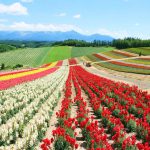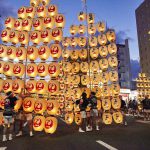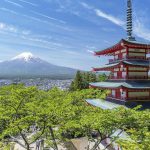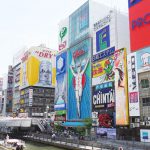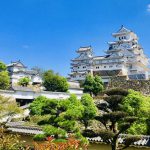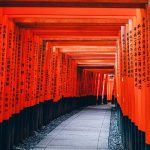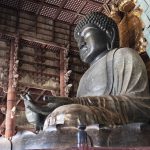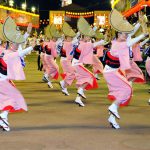Central Japan (Chubu)
Located in the central region of the Japanese archipelago are the Japan Alps that are composed of mountains over 3,000 meters in height, and stretching from north to south. The climate varies in each area, resulting in diverse cultures and industries. The Sea of Japan side is known as snow country in the winter. Many traditional industries are based there, including Wajima lacquerware and Kaga Yuzen kimonos. The production of rice and Japanese sake are also prominent industries. The central highlands are rich in beautiful mountains and basins, where highland vegetables and fruit are grown. Due to seasonal winds, the climate on the Pacific Ocean side is warmer, which is beneficial for the production of oranges and tea cultivation. This area is also home to automotive industry leaders, Toyota, Honda, Suzuki, and Yamaha.
Niigata
Niigata, with its heavy snowfall in winter, is a major producer of Japanese rice, including the top brand Uonuma Koshihikari. It is also one of the major Japanese sake production areas, and there are 90 breweries in operation, including famous brands, such as Kubota and Koshino Kanbai. Due to the large amount of snowfall, numerous ski resorts, such as Yuzawa and Myoko, are located in this region.
Sado Island is about an hour’s jetfoil ride from Niigata, where remnants of the world’s largest producing gold mine of the Edo period can be found. Visitors can go down into the tunnels to explore and learn about its history. Sado Island is also home to the renown drumming and performing arts troupe, Kodo, that has performed in more than 50 countries around the world. The Earth Celebration, held every August, is a very popular event.
Nagano
This area is blessed with a rich natural environment, with 3,000-meter high mountain ranges, including the Japan Alps, and the second highest number of hot spring resorts in Japan, after Hokkaido. Kamikochi is one of Japan’s leading mountain resorts where you can enjoy nature while sightseeing, hiking or even mountain climbing in the beautiful Hotaka Mountains. Nagano, where the Winter Olympics were held in 1998, is popular for winter sports, and offers a wide range of snow activities, such as Hakuba Happo One ski resort. Jigokudani Yaen-koen (Wild Monkey Park) is a popular attraction, where you can see snow monkeys relaxing in the hot springs. Zenkoji, founded in 644 in Nagano City, is a beautiful non-denominational Buddhist temple; it’s uniquely structured main hall is a registered national treasure, and is a very popular destination for worshippers.
Gifu
About 60 gassho-zukuri (slanted thatched roof) houses line the Ogimachi district of Shirakawa-go, which is a registered World Heritage Site. The gassho-zukuri houses were built in the late Edo and Meiji periods. The melding of culture and wisdom of the regional ancestors is displayed in the fine craftsmanship. The structures have withstood the snow, and strengthened through the years, without the use of metal nails. Overnight stays are available at some gassho-zukuri houses, where guests can try the local cuisine, and enjoy a memorable experience in a historic setting.
Takayama, also known as the “Little Kyoto of Hida,” is a must-visit destination. Points of interest include: the old streets of San-no-machi; the Takayama Jinya (regional government office), a valuable site that has remained intact since the days of the Tokugawa shogunate during the Edo period; and the spectacular Takayama Festival, held in the spring and fall, where lanterns are lit at night; it is considered to be one of the three most beautiful festivals in Japan.
The singing and dancing of Gujo Odori has been performed in the castle town of Gujo Hachiman for 400 years since the Edo period. It is a Bon (honoring the spirit of the ancestors) dance that lasts for 32 days, from July 9 to September 3. People dance all day and night until dawn, especially during the four days of the Bon period. Both locals and tourists alike can participate and enjoy the dancing.
Aichi
Located in the center of the Chubu region, Aichi has many attractions, including: Korankei, a valley colored by the beauty of the four seasons, such as its autumn foliage; the traditional pottery style of Seto-yaki; Toyota Motor Corporation, and the aerospace industry. Since many warlords, such as Tokugawa Ieyasu and Oda Nobunaga rose to prominence during the Warring States period, there are many famous castles in the region, including Nagoya Castle and Kiyosu Castle. Another must-see is Inuyama Castle, with the oldest existing main keep that has been designated a national treasure.
Toyama
The Tateyama Kurobe Alpine Route, which connects Tateyama in Toyama Prefecture to Omachi in Nagano Prefecture, runs through the Northern Alps, and is known as the “Roof of Japan,” with its series of mountains at an altitude of 3,000 meters. It is one of the world’s most impressive mountain routes, spanning 37 km, and you can enjoy a superb view of the Northern Alps. Due to nature conservation efforts, the route is closed to vehicles, and only public transportation, such as trolley buses, electric buses, cable cars, and aerial tramways operate on the route. In the spring, you can walk along a wall of snow, which can rise up to 20 meters high in heavy snowfall years; the scenic snow-covered valley is spectacular.
Held annually from September 1 to 3, Owara Kaze no Bon Festival is a wonderful traditional event in Toyama, where dancers wearing matching yukata (cotton kimono) and braided straw hats perform graceful and elegant dances to the accompanying songs and melancholy sounds of the kokyu (Japanese violin).
Ishikawa
Kanazawa is a castle town built by the feudal lord of the Kaga Domain during the Edo period. Old townscapes such as Higashi Chaya District, Kazuemachi Chaya District, and Nagamachi Samurai District remain, and traditional crafts, such as Kaga Yuzen, are highly recommended. Kenrokuen is one of Japan’s three most famous gardens, where you can enjoy the beauty of the four seasons, such as the winter tradition of Yukitsuri (a technique used to protect trees from heavy snow).
The Noto Peninsula, which stretches north across the Sea of Japan, is popular for its rugged cliffs and peculiar rock formations. Other attractions include: Noto Kongo, the largest hot spring; Wakura Onsen; and Wajima, known for its morning market and Wajima lacquerware.
Fukui
Eiheiji Temple is the headquarters of the Soto sect of Zen Buddhism, founded in 1244 by Zen Master Dogen. There are 70 halls of varying sizes in the 700-year-old cedar grove of the deep mountains and valley, where approximately 160 monks, Unsui, live during their training, which is based on Shikantaza, a practice of zazen. The training at Eiheiji is said to be the most rigorous of the many Zen temples in Japan. Visitors can experience zazen and sutra copying (hand-copying the calligraphy of Buddhist sutras).


